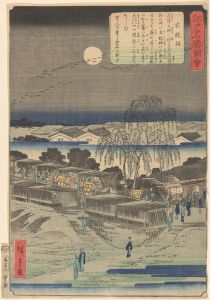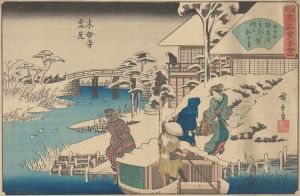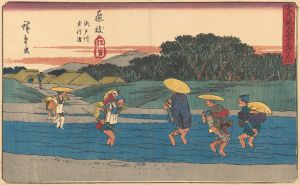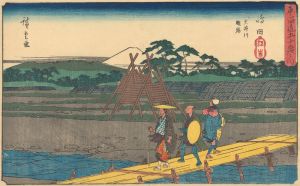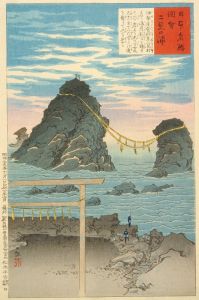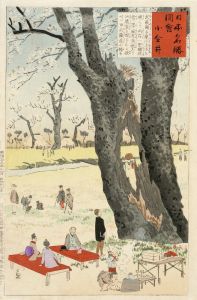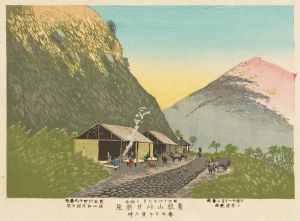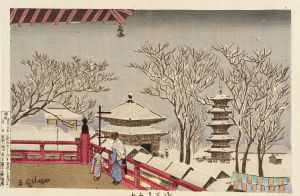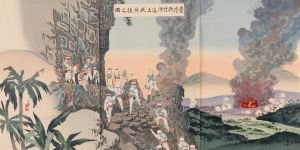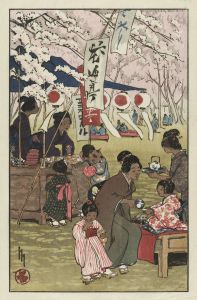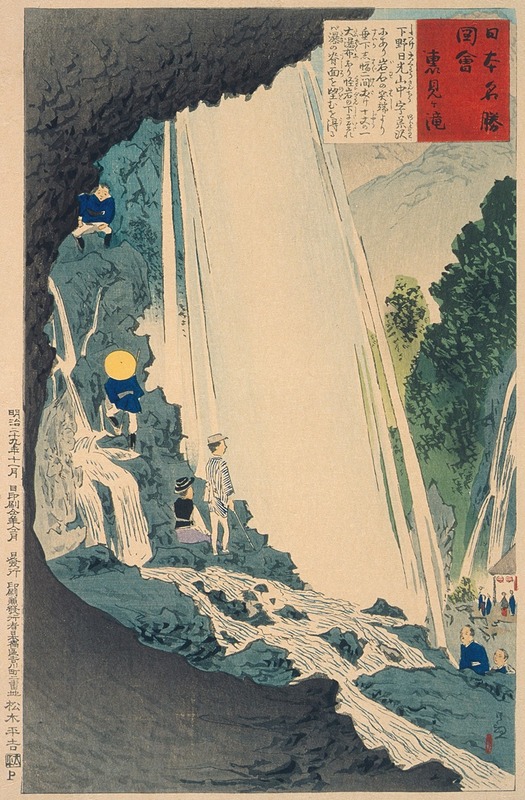
Urami Waterfall
A hand-painted replica of Kobayashi Kiyochika’s masterpiece Urami Waterfall, meticulously crafted by professional artists to capture the true essence of the original. Each piece is created with museum-quality canvas and rare mineral pigments, carefully painted by experienced artists with delicate brushstrokes and rich, layered colors to perfectly recreate the texture of the original artwork. Unlike machine-printed reproductions, this hand-painted version brings the painting to life, infused with the artist’s emotions and skill in every stroke. Whether for personal collection or home decoration, it instantly elevates the artistic atmosphere of any space.
Kobayashi Kiyochika (1847–1915) was a prominent Japanese artist known for his ukiyo-e woodblock prints and paintings. He is often celebrated for his innovative approach to traditional Japanese art forms, particularly during the Meiji era, a period marked by significant cultural and technological transformation in Japan. One of his notable works is "Urami Waterfall," which exemplifies his unique style and artistic vision.
"Urami Waterfall" is a woodblock print that captures the natural beauty and serene atmosphere of a waterfall. The term "Urami" can be translated to "back view" or "hidden view," suggesting that the waterfall depicted in the artwork is one that might be seen from a less common perspective, possibly from behind or from a secluded vantage point. This approach aligns with Kiyochika's tendency to explore unconventional angles and perspectives in his work.
Kiyochika's artistic career began relatively late in his life, around the age of 30, after the fall of the Tokugawa shogunate and the subsequent Meiji Restoration. This period of upheaval and modernization in Japan greatly influenced his art. He initially studied under Charles Wirgman, a British artist and cartoonist, and later under the Japanese artist Kawanabe Kyōsai. These diverse influences are evident in his work, which often blends Western techniques with traditional Japanese aesthetics.
In "Urami Waterfall," Kiyochika employs a combination of delicate lines and subtle color gradations to create a sense of depth and movement. The print showcases his skillful use of light and shadow, a technique he mastered through his study of Western art. The waterfall itself is depicted with a dynamic flow, capturing the essence of the water as it cascades down the rocks. Surrounding the waterfall, lush foliage and rugged terrain are rendered with meticulous detail, enhancing the naturalistic quality of the scene.
Kiyochika's work is often associated with the genre of "shin-hanga" (new prints), which sought to revitalize traditional ukiyo-e art by incorporating modern elements and techniques. Although "Urami Waterfall" predates the formal establishment of the shin-hanga movement, it embodies many of its principles, such as the emphasis on realism, the use of perspective, and the integration of contemporary themes.
Throughout his career, Kiyochika produced a wide range of works, including landscapes, cityscapes, and scenes of everyday life. His prints often reflect the rapid changes occurring in Japan during the Meiji era, capturing both the beauty of the natural world and the impact of modernization. "Urami Waterfall" is a testament to his ability to blend traditional Japanese art with new influences, creating a piece that is both timeless and innovative.
Kiyochika's legacy continues to be celebrated today, with his works held in numerous museums and collections around the world. "Urami Waterfall" remains a significant example of his artistic achievements, illustrating his mastery of the woodblock print medium and his unique vision of the natural world.






